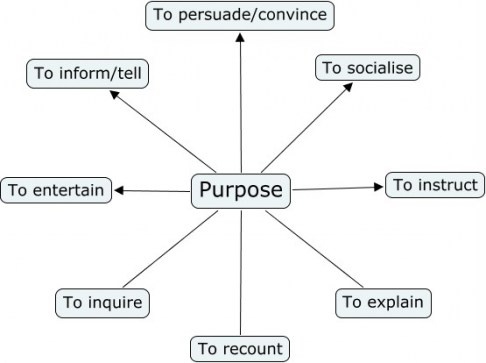Contents:


It also enables a business to invest in growth and improve efficiency, as well as improve its overall financial stability and credibility with investors and lenders. Without a good cash flow, your company will likely have very limited opportunities for growth. The working capital cycle illustrates that most businesses rely on an interrelated system of debt and credit.
This offer cannot be combined with any other QuickBooks Online promotion or offers. Difference between gross working capital and net working capital can provide valuable insights, offering for a more concrete analytical foundation. Just as a negative working capital figure is not desirable, it can also indicate managerial inefficiency if it is too high. Company’s liquidity is an excellent sign of how a company is growing. Cash equivalents are financial instruments that can be immediately converted into cash. Net working capital tells us about financial health and, more specifically, short-term financial health.
Working capital is obtained from many company operations like inventory and debt management, revenue collection, and supplier payments. Now with the concept of working capital being clear, one needs to know about different types of working capital and the various sources from which it can be derived for the company or the firm. The next stage is converting raw materials into finished goods, which the company sells to customers within 85 days of acquiring raw materials but on 15 days’ credit. Payable days are the number of days it takes the company to make payments to the raw material supplier.
The ‘Positive Net Working Capital’ represents the excess of current assets over current liabilities. When depreciation is excluded from expenses in the operating cycle, the net operating cycle represents the ‘cash conversion cycle’. Thus, the need for inventory increases during this period as compared to the other periods of the year. Therefore, businesses need additional funds to purchase inventories during the specific time of the year. As a result, the seasonality of business impacts the working capital requirements of the business.
This is calculated by reducing the current liabilities from the current assets of the business. Networking capital is the difference between the current assets and current liabilities of the company. If the company’s assets are more than current liabilities, it indicates a positive working capital, and the company is in a financial position to meet its obligations.
What is the Net Working Capital Formula?
It comprises the current assets at minimum which is required for keeping the business operations working. This needs to be noted that fixed working capital size always depends on the growth and production scale. Mostly, these long-term sources are used for availing a working capital of a fixed type. Running a business often seems like juggling multiple responsibilities at a time.
These include cash, accounts receivable, inventory, and accounts payable. Working capital is a measure of a company’s liquidity and its ability to meet its short-term obligations. Working Capital as a financial metric is obtained by subtracting the Current Liabilities (wages, taxes, short-term debts, utilities etc) of a company from its Current Assets. Current Assets are liquid instruments which can be easily converted into cash within one year. For example Cash in hand, bank balance, short-term investments, raw materials, receivables etc. Similarly, Current Liabilities are payments which are due within one year.
He has been awarded best paper award for his paper presented in an international conference in Thailand. He is the editorial board member for three International Journals and reviewer to more than twenty International and national Journals. Using TallyPrime’s ratio analysis report, you can instantly know the financial ratios including the working capital ratios. Ratio analysis report helps you compare different sets of financial data, giving you an understanding of the financial position of a business. Credit terms given to customers that affect sales and collection practices.
Working capital management includes keeping track of a variety of ratios, such as the working capital ratio, collection ratio, and inventory ratio. In conclusion, working capital is a crucial aspect of any business’s financial management. It is essential to ensure that the company has sufficient liquidity to operate and grow without facing any cash flow issues.
Types of Net Working Capital
Every business tries to reduce the working capital cycle as much as possible to increase the positive cash flow. The lower the time to turn net assets and current liabilities into cash, the higher the profits. However, as a business goes through various phases, the working capital cycle can affect profitability differently. This is one of the most essential components undoubtedly for the working capital is the current assets, as this helps in maintaining and optimizing the operation activities. It must be noted that this also needs to include some liquid securities which need to be easily converted. It is essential for managing the cash very efficiently for optimizing the operating cycle, cutting unwanted expenses, and boosting profitability.
- On the contrary, in a negative working capital cycle, you have enough money to pay your credits before the due date.
- Thus money so invested in the business takes time to come back to the company.
- Working or current capital is the amount of money that a business has available to meet its short-term financial obligations.
- Generally, the semi-finished raw materials, and also finished goods create the stock or inventory.
Furthermore, you must evaluate the return on the number of funds invested in the business in the form of working capital. Such a return should be at least equal to the return earned by the business in case it invested funds in other avenues. An investor compares these figures and deduces such an organisation to be in a good state. However, in the previous year, its current liabilities showed a total of Rs.5 lakh; in this year, it’s reckoned at Rs.9 lakh. Net working capital, also known as working capital is the money/assets a company needs to fend for its short-term expenses. A ratio lower than 2 indicates the company is not in a position to pay its creditors within one year.
Under the category long-term, working capital falls long term loans, retained profits, provisions for depreciation, share capital and debentures, etc. On the other hand, spontaneous working capital is mainly obtained from trade credit which includes bills payable and notes payable. So these are the three types of working capital of a business entity based on their needs. The act of paying out money for any kind of transaction is known as disbursement. From a lending perspective this usual implies the transfer of the loan amount to the borrower. It may cover paying to operate a business, dividend payments, cash outflow etc.
The Influence of Small Businesses on Our Economy
Net Working Capital is the amount by which current assets exceed the current liabilities of a business. Thus, the working capital equation is defined as the difference between current assets and current liabilities. Where current assets refer to the sum of cash, accounts receivable, raw material and finished goods inventory. To obtain the working capital of a specific firm or organization one is required to subtract the current liabilities from the total current assets of the entity. This ratio suggests whether the particular organization has sufficient assets with it to take care of its short-term debt. Working capital refers to the current assets and liabilities that a company has, which are used to fund its day-to-day operations.

Net working capital is the total difference between a company’s current assets and its current liabilities (such as accounts payable, short-term debt, and accrued expenses). It represents a company’s funds available to meet its short-term financial obligations. When a company’s working capital turnover ratio isn’t monitored closely, it may run out of money for day-to-day operations and short-term loans. Working capital management may help to remain on top of the company’s accounts payable, accounts receivable, debt, and stock management by incorporating it into the business plan. This ensures that the company utilizes its working capital for optimal efficiency and management.
Without sufficient operating capital, businesses may struggle to pay their bills on time, meet payroll obligations, or take advantage of growth opportunities. Conversely, having too much capital tied up in inventory or accounts receivable can limit a business’s ability to invest in growth opportunities. Managing accounts payable is also important for operating capital management. Delayed payment to suppliers can damage relationships and can cause late fees or interest charges, while prompt payment can improve cash flow and may lead to discounts or other benefits. Businesses can improve their operating capital by managing accounts payable effectively and negotiating favorable payment terms with suppliers.
On the other hand, businesses having insufficient working capital have higher odds of going bankrupt. This is because of their inability to pay for their short-term obligations, thus making it difficult for them to grow. Net working capital depicts a more comprehensive picture of a company’s operational efficiency. Suppose, a company’s books show trade receivables to be Rs.3 lakh, inventory as Rs.5 lakh, cash and cash equivalent as Rs.2 lakh. Let’s take an example to comprehend better why the net working capital is a more definite indicator of a company’s financial health.
This means it working capital days meaning the company 18.25 days to collect payment from its customers. It is the time to taken to convert net assets and net liabilities into cash. There are several day-to-day business activities which required readily available cash. A working capital cycle can be long and short depending upon the time taken to convert into cash.
Thus money so invested in the business takes time to come back to the company. It means how many days, a company takes to realize its sales value back. Before you delve into the various ratios that help with working capital management, take a look at what current assets and current liabilities mean. Inventory is a very important component of the company’s current assets, which is a result of the essential for the proper management of the working capital. Generally, the semi-finished raw materials, and also finished goods create the stock or inventory.
Wayfair inc (W) Q1 2023 Earnings Call Transcript – AlphaStreet
Wayfair inc (W) Q1 2023 Earnings Call Transcript.
Posted: Thu, 04 May 2023 10:36:00 GMT [source]
The difference between a company’s current assets and current liabilities is known as working capital. It is calculated using the assets and liabilities listed on a company’s balance sheet. Assets such as cash-in-hand, bank balance, accounts receivable, inventory, advance paid are expected to be liquidated or converted into cash in less than a year. Similarly, liabilities such as accounts payable, wages, taxes payable, advance received, interest payable, monthly loan installments are due within one year.
Operating cycle management
It represents additional assets required for the operations of the year. This excess requirement of working capital is financed from short- term financing sources. This is because it greatly impacts the liquidity and profitability of the business. So you need to ascertain the amount of working capital needed and the sources of financing such a capital. This is to ensure that the working capital available is sufficient to meet the short term obligations of your business. Current assets and current liabilities are two items that will be there in the balance sheet of any company, listed or unlisted.
On the other hand, retail stores must keep a large quantity of inventory to meet the diversified and continuous needs of its customers. The amount of working capital in a business is the indicator of liquidity, operational efficiency and short-term financial soundness of the business. Businesses having adequate working capital typically have the ability to invest and grow.
401(k) Diversification Is Not Working – Nasdaq
401(k) Diversification Is Not Working.
Posted: Sat, 06 May 2023 03:34:27 GMT [source]
If the working cycle is much longer, the capital would get stuck in between without getting the returns for this operational cycle. Such businesses are always striving to lower the working capital cycle for viewing towards enhancing this liquidity for the short-term. The term “current” in this context refers to the “short-term.” Assume your company’s current assets are worth Rs 200,000. By tracking your working capital cycle over time, you can identify areas where you can improve efficiency and optimize your cash flow. It means a company is waiting to receive payment to create available cash. Positive working capital indicates that a company has a good short-term health.
This would lead the firms to optimize themselves and maintain themselves successfully. For example, such an increase in the firm’s current liabilities and current assets by some of the same units would not lead to any change in the working capital. ‘Working Capital’ is the term used basically to indicate the financial condition of a firm or an organization in the short term.